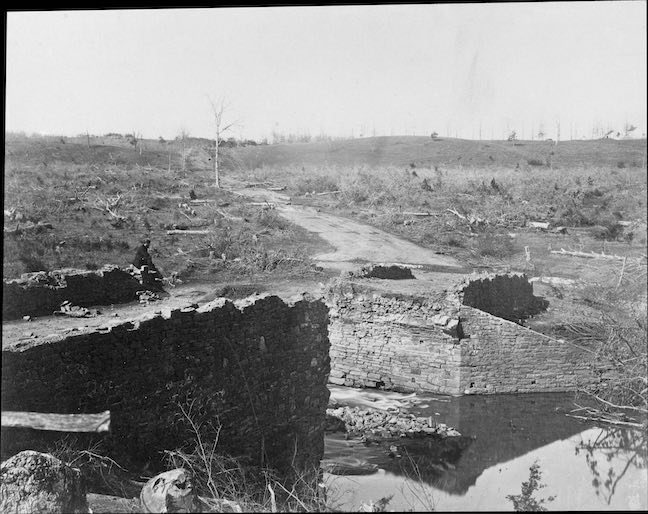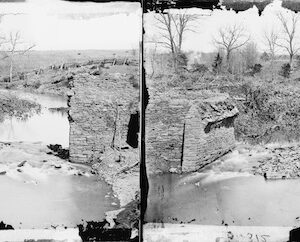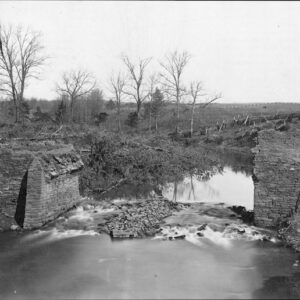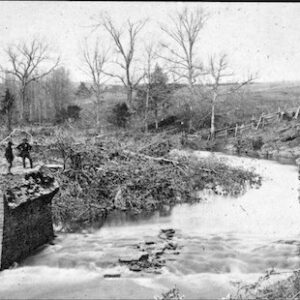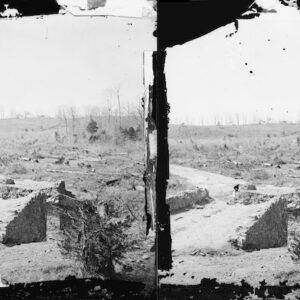| Credit: | by Barnard (George N.) |
|---|---|
| Date: | 1862.03 |
| Negative Size: | 8 in. x 10 in. |
| Locations & Lines: | Bull Run battlefield; Bull Run VA; Virginia |
| Military Units: | CS Army; US Army |
| Structures & Establishments: | Stone Bridge (a) (Bull Run VA) |
| Sources: | Library of Congress; National Archives |
$6.99
File Details: AEJZm, 800 DPI, TIFF, Original Photograph, 41.3 Mb
Image ID: AEJZ
Gardners Photographic Sketch Book Of The War. Vol. 1, No. 7. Ruins of Stone Bridge, Bull Run. March, 1862. The sketch represents a portion of the field of the battle of Bull Run, fought on the 21st of July, 1861, by the forces under Gen. McDowell and Gen. Beauregard. in a general order, issued on the 20th, Gen. McDowell said: The enemy has planted a battery on the Warrenton turnpike to defend the passage of Bull Run; has seized the stone bridge, and made a heavy abatis on the right bank, to oppose our advance in that direction. The ford above the bridge is also guarded, whether with artillery or not, is not positively known, but every indication favors the belief that he proposes to defend the passage of the stream. It is intended to turn the position, force the enemy from the road, that it may be re-opened, and, if possible, destroy the railroad leading from Manassas to the Valley of Virginia, where the enemy has a large force. General McDowell commenced operations with the divisions of Tyler, Hunter, Heintzelman, and Miles33,000 men; 18,000 of whom were engaged. The strength of the enemy was about the same, and was all engaged. The plan of the attack was for Tylers division to threaten the passage of the bridge, Miles to make a demonstration at Blackburns Ford, two miles below, and the divisions of Hunter and Heintzelman to move up the stream ten miles, and by a flank movement surprise and overwhelm the enemy while occupied with the other two divisions. The country at that time was densely wooded, and the entire portion shown in the sketch occupied by the Confederates. It was expected that Hunter and Heintzelman would strike the left of the enemy at daylight on the 21st, but owing to unforeseen obstacle, failed to reach the designated point until after ten oclock. This delay revealed the movement to Beauregard, who immediately disposed his forces to meet it by extending them obliquely across the turnpike, facing the bridge, at a distance of about two miles. Hunter, Heintzelman, and Tyler, who had crossed the bridge, attacked the enemy, and the engagement became general; our forces, after a severe struggle, driving him in great confusion from the field, and occupying the turnpike. The fighting had nearly ceased, and Gen. McDowell was expressing his thanks to some of his officers for their services, when Johnstons reinforcements from Winchester suddenly appeared in rear of our right, and threw our lines into utter confusion. A feeble attempt was made to repulse the attack, but the regiments rapidly broke to pieces, and forming a mass of terror-stricken fugitives, rushed from the field down across the bridge, which soon became obstructed by wagons, and to prevent pursuit by the enemy was destroyed. A portion of this ground was fought over in the battles of Gen. Pope in 1862, and hundreds of acres still bear evidences of those fearful scenes.
Some prints were produced from reduction copy negatives that reduced them to album card (or faux stereo card) size.
